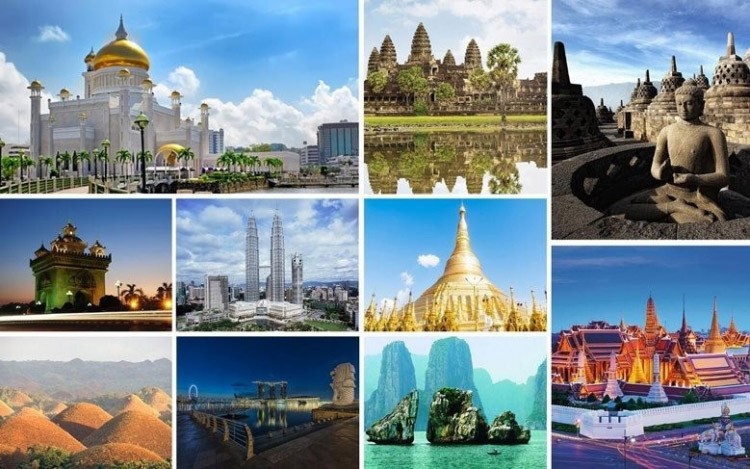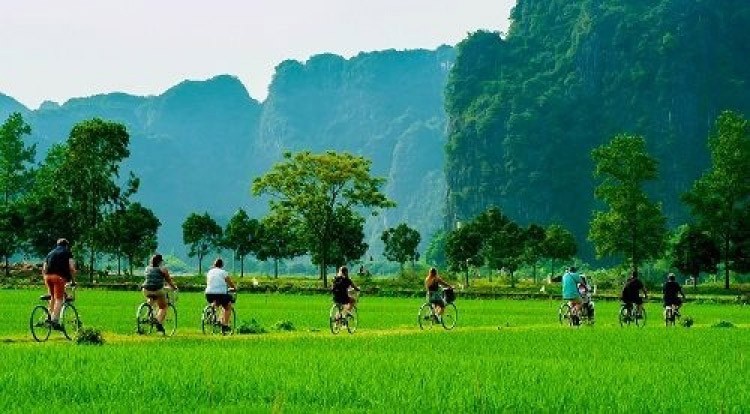
'Drawing' more on Vietnam’s tourism map, along with ASEAN to develop sustainable tourism
Latest
 |
| Vietnam has been proactively joining in the the process of cooperation and development of tourism in the region. (Photo: ITC Vietnam) |
Sustainable tourism is considered as the key factor to support destinations maintain the reputation and competitive brand, while improving the relations between local communities, tourists and other parties.
Following the outlook of “Strategic Plan for ASEAN Tourism 2016 - 2025”, by 2025, ASEAN will become a qualified tourism destination, providing tourists with experiences of an diverse and unique ASEAN.
Together with ASEAN develop sustainable tourism
As a member of ASEAN Community, Vietnam has been proactively joining in the process of regional tourism cooperation and development in the region. With common efforts and commitments, Vietnam and ASEAN member countries have created an extensive cooperation to exploit the potential of the tourism industry and build an attractive and sustainable ASEAN tourism region.
In August 2023, the Vietnamese Government introduced a new visa policy, extending the stay period for markets exempted from visas by Vietnam and officially applying electronic visas to all countries and territories, which is hoped to create more favorable conditions for international tourists.
In addition, Vietnam has agreed on measures to strengthen the promotion of ASEAN tourism in the international market, such as organizing ASEAN tourism exhibitions and other important events.
The S-shaped country has also participated in the development of tourist routes connecting ASEAN countries, to facilitate movement and exploration of the region.
According to experts, Vietnam is a country with many favorable conditions to develop the tourism industry, especially sustainable tourism.
For example, Vietnam has a lot of potential for tourism development with many beautiful, rich and diverse natural landscapes across the country, which are attractive to tourists. The country has more than 40,000 relics and landscapes, of which more than 3.000 relics are ranked national ones and 5.000 relics are ranked provincial level.
Vietnam is one of the few countries in the world that has many heritage sites recognized by UNESCO, including: Thang Long Imperial Citadel; Hoi An ancient town; Trang An scenic complex; Hue ancient capital; Ho Dynasty Citadel, My Son Sanctuary, Phong Nha - Ke Bang National Park, Ha Long Bay. This is one of Vietnam's tourism potentials to attract international visitors.
Furthermore, throughout the territory of Vietnam there are about 117 museums - places that preserve the nation's historical process with heroic marks that attract tourists to learn about Vietnam’s history.
The S-shaped country has 54 ethnic groups, each region and each ethnic group has its own cultural identity, customs; and lifestyle, creating its own charm. In addition, Vietnam also possesses famous intangible cultural heritages such as Hue royal court music, Central Highlands gong cultural space; ca tru, quan ho; Xoan singing; Giong festival; Hung Vuong worshiping beliefs. Those are attractive reasons that attract international tourists.
 |
| Agricultural tourism helps Vietnam open a new tourism map from existing points. (Photo: Vietnam Financial Times) |
Creating miracles from agricultural tourism
At the recent conference on rapid and sustainable tourism development, Minister of Agriculture and Rural Development Le Minh Hoan assessed that Vietnam is a country with a long history of developing agricultural ecology based on a natural ecosystem with biodiversity resources among the 16 highest countries in the world. Therefore, agricultural and rural tourism is rich and diverse. If Vietnam knows how to exploit and connect with each other, it will certainly create miracles.
Minister Le Minh Hoan acknowledged: "A river, a mountain, an identity, a brocade, a flute, etc. all are heritage. If we consider heritage as a new tourism product, not just a Son Doong or the Ancient Capital, it will lengthen the tourist map of Vietnam, (heritage) will bring difference, and great values".
With the potential and space of the agricultural tourism industry, the Minister of Agriculture and Rural Development proposed that the Prime Minister and the Ministry of Culture, Sports and Tourism need to "draw" more in Vietnam's tourism map, expanding new tourism destination.
“Agricultural tourism helps Vietnam open up a new tourism map from existing points. Therefore, we should have a new thinking about agricultural tourism. Despite less revenue, it is the vitality of the community and the cultural identity of the peoples," Minister Le Minh Hoan emphasized.
In the coming time, Dr. Nguyen Van Thang, Deputy Director in charge of the Center for Development Strategy and Policy, Hanoi Capital University, said that the Government needs mechanisms and policies to encourage travel businesses to receive tourists to the countryside. Along with that, investment in developing transport infrastructure, waste collection and treatment facilities are also needed.
Dr. Nguyen Van Thang said: "The tourism industry needs to develop a set of rural tourism destination criteria associated with new rural construction, thereby orienting localities to invest in construction".
From the business perspective, Director of Travelogi Vietnam Tourism Company Vu Van Tuyen said that in the immediate future, the tourism industry needs to identify target tourists from which to launch appropriate product marketing activities.
He emphasized: "The main market for agricultural and rural tourism today is still domestic tourists because of the need for clean food and green environment, experiencing the traditional lifestyle of people living in cities is huge. This will be a significant source of revenue for this type of tourism".

















